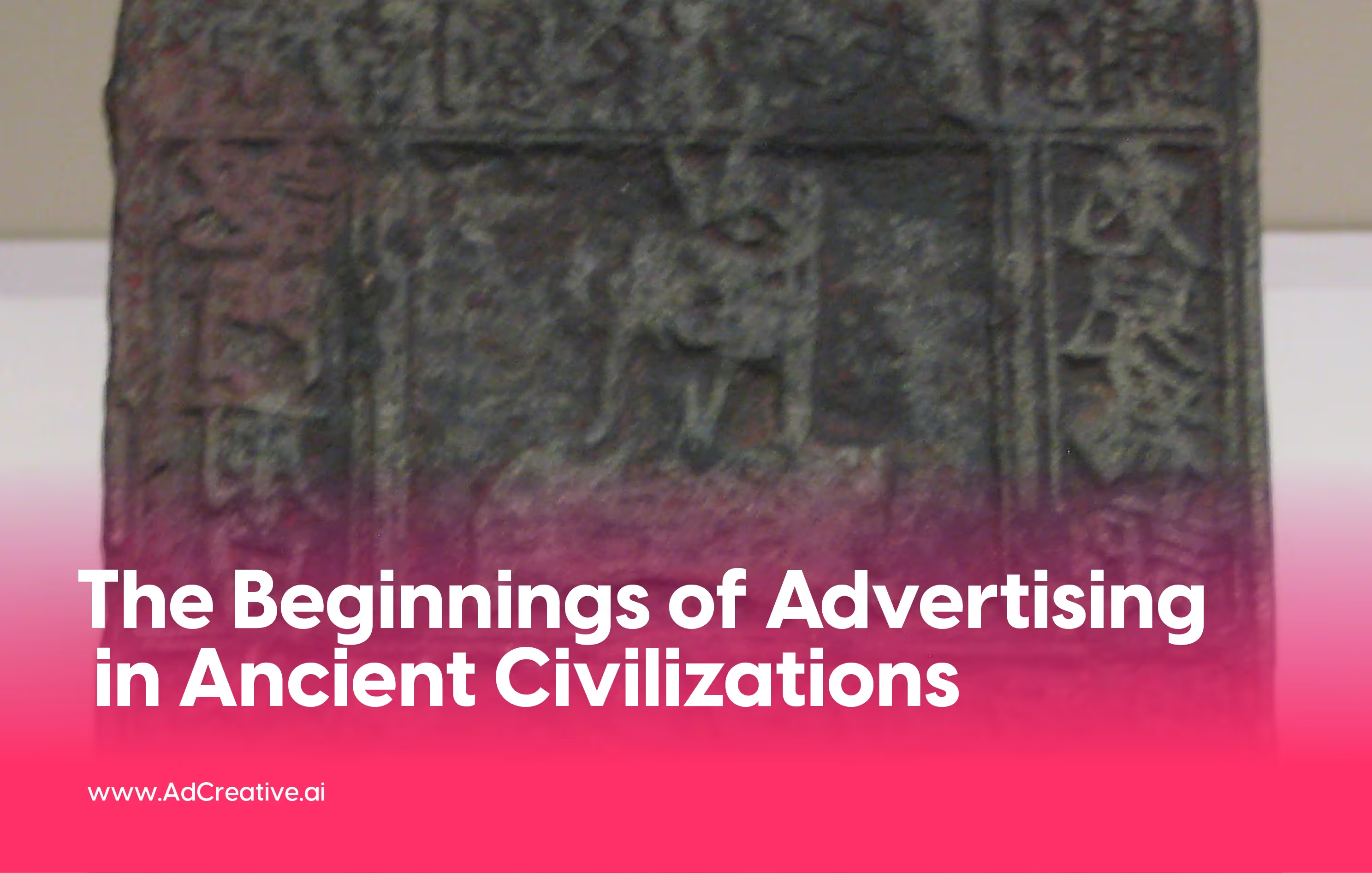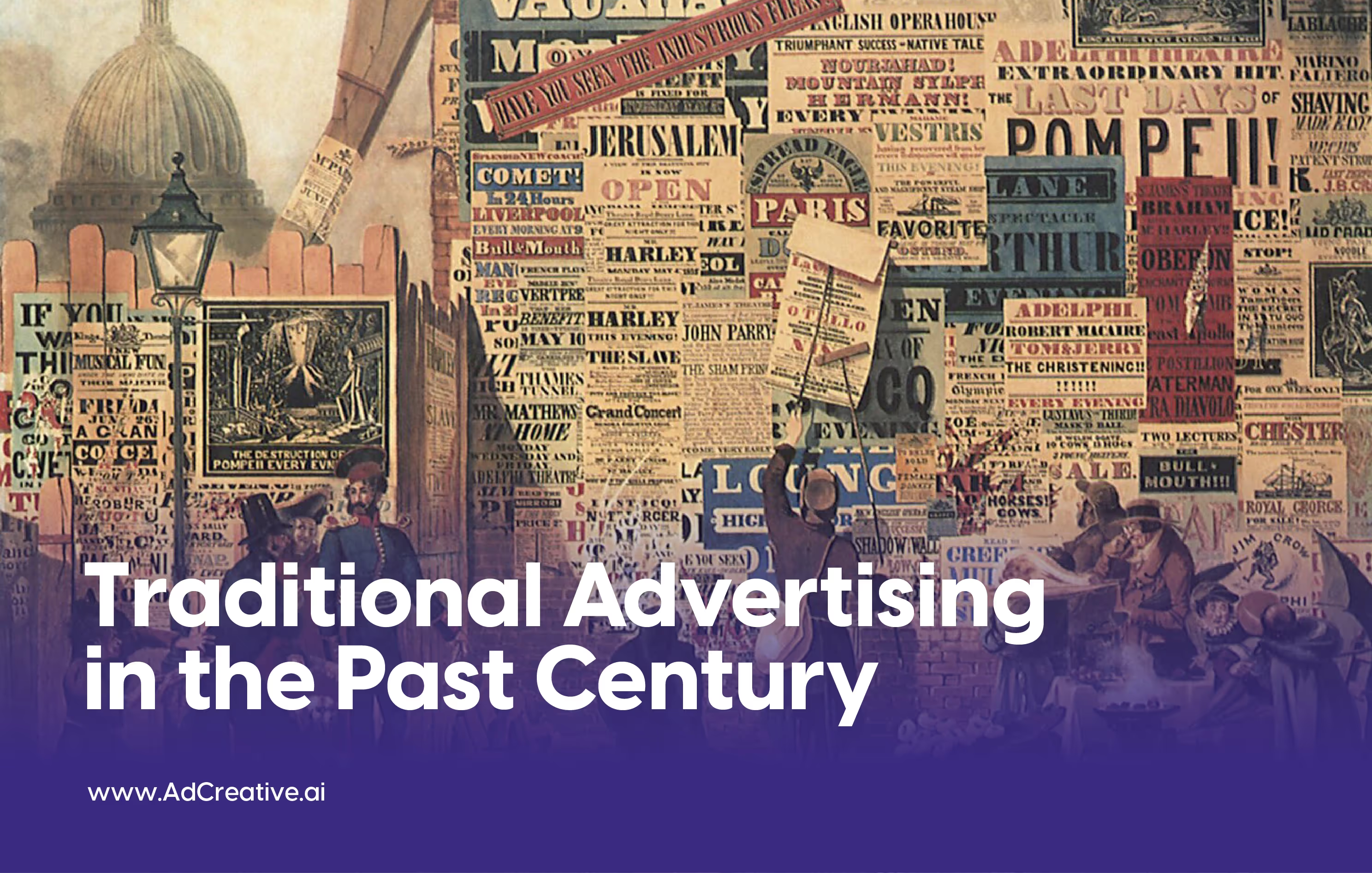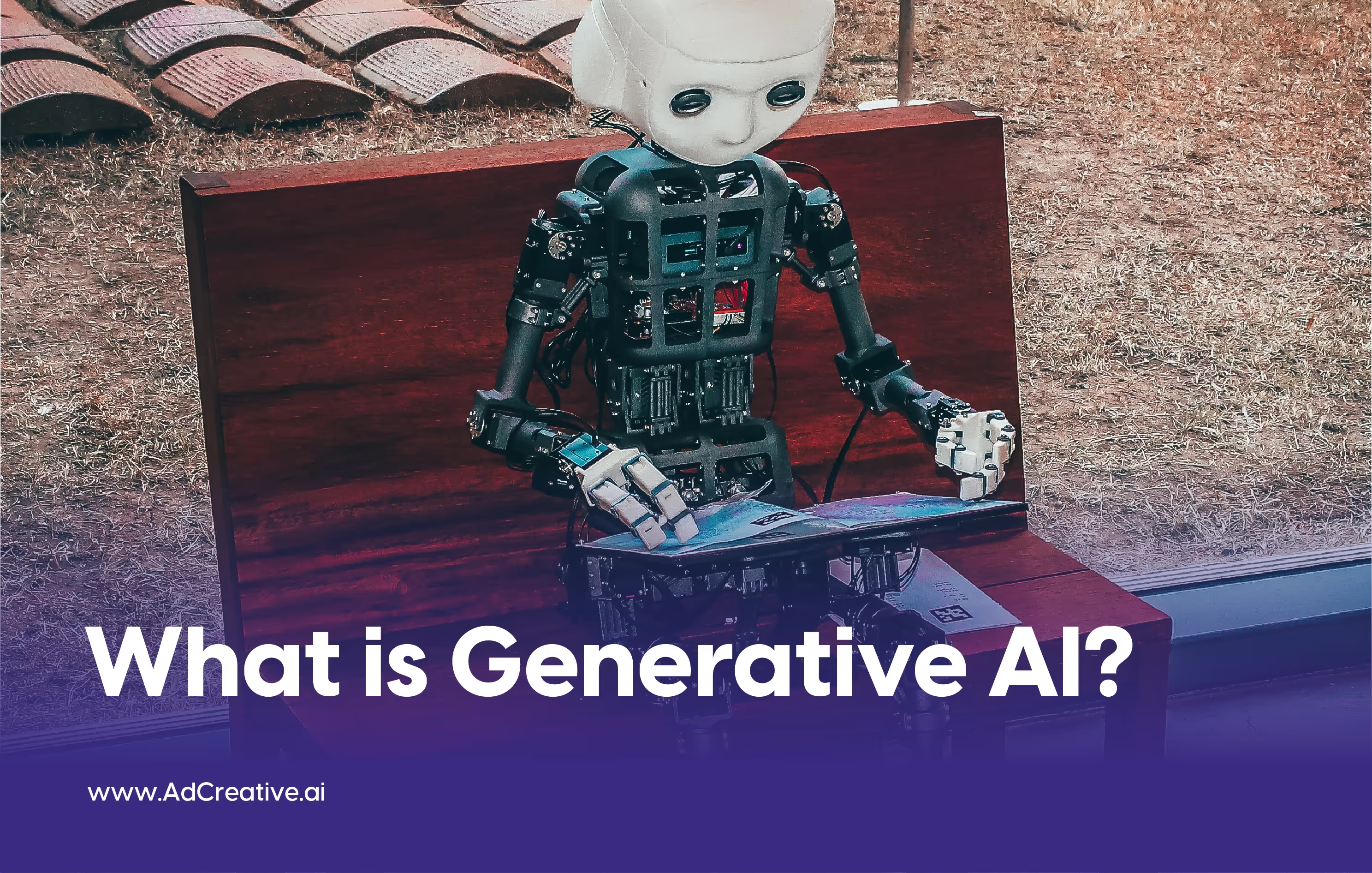The Beginnings of Advertising in Ancient Civilizations

Image By BabelStone - Own work, CC BY-SA 3.0,
Advertising dates back to ancient times, when many civilizations adopted some methods to reach their prospects.
In Egypt, papyrus was used to create sales messages and wall posters. Ruins in Pompeii and Arabia have revealed commercial messages and political campaign displays.
Lost and found advertising on papyrus was common in Ancient Greece and Ancient Rome.
Another ancient form of advertising was wall or rock painting, which can still be found in many parts of Asia, Africa, and South America. This tradition can be traced to Indian rock art paintings dating back to 4000 BCE.
In ancient China, advertising took on an oral form, as recorded in the Classic of Poetry from the 11th to 7th centuries BCE, where bamboo flutes were used to play tunes to sell candy. Calligraphic signboards and inked papers were also used as forms of advertisement.
These historical examples highlight the long-standing practice of advertising throughout human civilization.
From using papyrus and wall posters in Egypt to oral advertisements in ancient China, humans have always sought ways to communicate commercial messages and promote products or services.
The evolution of advertising has come a long way, with modern-day advertising taking on various forms, such as digital, print, broadcast, and social media. Still, the roots of this practice can be traced back to ancient times when creative means were used to capture the attention of potential customers.
Advertising continues to play a significant role in society, shaping consumer behaviors, influencing purchasing decisions, and driving economic growth.
Traditional Advertising in the Past Century

Image Source Outdoor advertising was based on hoardings (billboards): England 1835, by John Orlando Parry
In the past century, advertising primarily revolved around traditional media such as print, radio, and television. Print advertisements appeared in newspapers, magazines, billboards, and posters, utilizing catchy headlines, captivating images, and persuasive copywriting to capture consumers' attention. Radio commercials were broadcasted to a captive audience, reaching listeners during their daily routines. Television commercials were aired during popular shows, becoming a prominent part of the television viewing experience.
Advertising was primarily one-way communication, with brands delivering messages to consumers with little interaction or engagement. Brands focused on mass marketing, targeting broad audiences with a one-size-fits-all approach. The creative process involved extensive research, copywriting, and designing, with a limited ability to personalize advertisements for individual consumers.
The Present-Day World of Advertising Using Generative Ai

We have come a long way in advertising being a one-way communication to more interactive and personalized. Today we have new technologies like Ai that are paving the way for advertisers to know and do more than ever before.
The digital revolution has transformed the advertising landscape, leading to a significant shift in how brands communicate with consumers. With the advent of the internet, social media, and advanced data analytics, advertising has become more personalized, interactive, and data-driven.
One of the critical changes in advertising is the shift toward digital platforms. Online advertisements are ubiquitous on websites, search engines, social media, and mobile apps. Digital advertising offers targeted and personalized messaging, allowing brands to tailor their advertisements to specific demographics, interests, and behaviors of consumers. Advanced data analytics enable brands to gather insights into consumer preferences, purchase behaviors, and browsing patterns, which can be used to create more relevant and compelling advertisements.
In addition to personalization, interactivity has become a crucial element of modern advertising. Consumers can now engage with advertisements through social media, interactive videos, gamification, and augmented reality experiences. This two-way communication allows for better consumer engagement, brand interaction, and feedback, leading to a more immersive and memorable advertising experience.
Another significant shift in advertising is the rise of influencer marketing. Influencer marketing leverages the power of social media and word-of-mouth marketing to create authentic and relatable content that resonates with consumers. Influencers, who have a large following on social media, are utilized by brands to promote products or services to their audience.
Moreover, advertising has become more purpose-driven and socially responsible. Consumers today are more conscious of social issues and expect brands to align with their values. Brands increasingly integrate social causes, sustainability, and diversity in their advertisements to connect with socially-conscious consumers.
This has led to using technology capable of considering all the parameters, personalizing, automating, and helping brands scale. One such technology indispensable to advertisers and brands is Generative Ai.
Generative Artificial Intelligence (AI) is one of these cutting-edge technologies that has gained traction in the advertising industry, promising to revolutionize how ads are created and delivered.
Platforms like AdCreative.ai leverage generative AI to automate content creation and generate ad creatives with unprecedented speed and efficiency. But first, let's look at what generative AI is and how it works.
What is Generative AI?

Generative AI is a subset of machine learning that uses algorithms to generate new content, such as images, videos, and text, based on patterns learned from existing data. This revolutionary technology transforms advertising, unlocking new opportunities for creativity, personalization, and efficiency.
With generative AI, marketers can create visually stunning visuals, captivating videos, and persuasive copy generated by algorithms. It could disrupt the traditional advertising landscape by automating content creation and enabling marketers to produce unique and engaging advertisements at scale. This process saves time and resources and opens up new possibilities for creativity and experimentation.
Generative AI algorithms can automatically generate content tailored to individual users. For example, a fashion retailer can use generative AI to create personalized fashion recommendations based on a user's browsing history and purchase behavior. This level of personalization can significantly enhance user engagement and increase the likelihood of conversion. Now let's understand how this technology can transform advertising.
Transforming Advertising with Generative AI

The introduction of Generative Artificial Intelligence (AI) has brought about significant changes in the advertising landscape, revolutionizing how ads are created, delivered, and personalized. Let's look into the different ways the advertising landscape is changing-
Generative AI has transformed content creation in advertising. Traditionally, ad creation involved human designers spending significant time and effort conceptualizing, designing, and producing ad creatives. Generative AI has automated this process, enabling advertisers to generate many ad creatives in a fraction of the time. With generative AI, advertisers can experiment with different ad variations, test their effectiveness, and optimize campaigns based on real-time data. This has resulted in faster, more efficient, data-driven ad creation processes.
Moreover, generative AI has also enhanced personalization and targeting in advertising. By analyzing vast amounts of user data, generative AI algorithms can create highly personalized ad creatives tailored to individual users' preferences, behaviors, and demographics. This level of personalization allows advertisers to deliver highly relevant and engaging ads to users, resulting in improved user experiences and higher conversion rates. Generative AI also enables advertisers to optimize ad creatives for specific target audiences, resulting in more targeted and effective advertising campaigns.
Generative AI, which uses algorithms to generate content autonomously, has opened up new possibilities for advertisers, allowing them to create highly customized and engaging ads that resonate with their target audiences.
Generative AI enables advertisers to create more inclusive and diverse content. Traditional advertising has often been criticized for its lack of representation and diversity. However, generative AI can help overcome these challenges by generating inclusive content and representative of different cultures. This can help brands connect with a broader audience and foster a positive brand image.
Furthermore, generative AI can streamline the advertising workflow by automating repetitive tasks, such as image editing and video production. For instance, a digital marketing agency can use generative AI to automatically generate multiple variations of an ad creative, such as different image placements, color schemes, and copy variations. Doing this can significantly reduce the time and effort required to create and test different ad variations, allowing marketers to optimize their campaigns more efficiently.
Another exciting application of generative AI in advertising is in the realm of virtual and augmented reality. Generative AI can be used to create realistic and immersive virtual worlds and experiences, which can be used for advertising purposes.
For example, a travel agency can use generative AI to create virtual tours of popular destinations, allowing users to explore and interact with virtual environments before making a booking decision. This can give users a unique and engaging advertising experience, leading to higher brand recall and conversion rates.
However, it's important to note that generative AI also raises ethical concerns in advertising. For instance, using generative AI in deep fake technology, which involves creating realistic but fake content, can be misleading and potentially harmful to consumers. Therefore, advertisers must use generative AI responsibly and ensure that the content generated is truthful, transparent, and complies with ethical standards.
Let's summarise the advantages of using generative AI-
Efficiency and Speed
Generative AI in advertising is the speed and efficiency of content creation. Traditional ad creation can be time-consuming and resource-intensive, involving multiple iterations and approvals. Generative AI can automate this process, allowing advertisers to generate a large number of ad creatives in a short amount of time. This can help advertisers keep up with the fast-paced nature of digital advertising.
Creativity and Innovation
Generative AI opens up new possibilities for creativity and innovation in advertising. By analyzing vast amounts of data and learning from patterns, generative AI can generate unique and original ad creatives that human designers may not have conceived. This can result in fresh and unexpected creative concepts that capture users' attention and stand out in a crowded advertising landscape. Generative AI also enables advertisers to experiment with different variations of ad creatives, test their effectiveness, and optimize campaigns for better performance.
Personalization and Targeting
Generative AI has the potential to revolutionize personalization in advertising. By analyzing user data, generative AI algorithms can create highly personalized ad creatives tailored to individual users' preferences, behaviors, and demographics. This can lead to more relevant and engaging ads that resonate with users, increase engagement, and boost conversion rates. Generative AI can also help advertisers create ad creatives optimized for specific target audiences, allowing them to deliver more targeted and effective advertising campaigns.
Risks and ethical considerations are also associated with using generative AI in advertising. Let's analyze some of them.
Concerns about using Generative Ai

Ethical Concerns
Generative AI raises ethical concerns about ad creatives' authenticity and truthfulness. With the ability to generate realistic and convincing content, generative AI can be used to create deep fakes or misleading ads that may deceive users.
Advertisers must ensure that the content generated by generative AI is truthful, transparent, and complies with ethical standards. This includes being transparent about using generative AI in ad creatives and avoiding deceptive practices that may harm consumers' trust.
Bias and Representation
Generative AI algorithms learn from existing data, which may contain biases and limitations. If the data used to train the generative AI contains biased information, it can result in biased ad creatives. This can perpetuate existing stereotypes, discrimination, and lack of representation in advertising. Advertisers must be mindful of the potential biases and ensure that the generative AI algorithms used in ad creation are trained on diverse and representative data to avoid reinforcing harmful biases.
Lack of Human Touch
While generative AI can automate the ad creation process, it may need more human touch and emotional intelligence that human designers bring to the table. Human designers often consider subjective factors such as emotions, cultural nuances, and creative instincts, which generative AI may not fully replicate. Advertisers must balance using generative AI for efficiency and creativity while involving human designers in the creative process to add the human touch.
Conclusion
In conclusion, generative AI is revolutionizing the advertising industry by unlocking new opportunities for creativity, personalization, and efficiency. From creating personalized content to automating repetitive tasks and enhancing virtual and augmented reality experiences, generative AI can transform how advertisers create and deliver content to their target audience. As generative AI continues to advance, it will undoubtedly shape the future of advertising and redefine how brands connect with their audiences. However, ethical considerations must be considered to ensure that the use of generative AI in advertising is responsible and aligned with consumer expectations.




